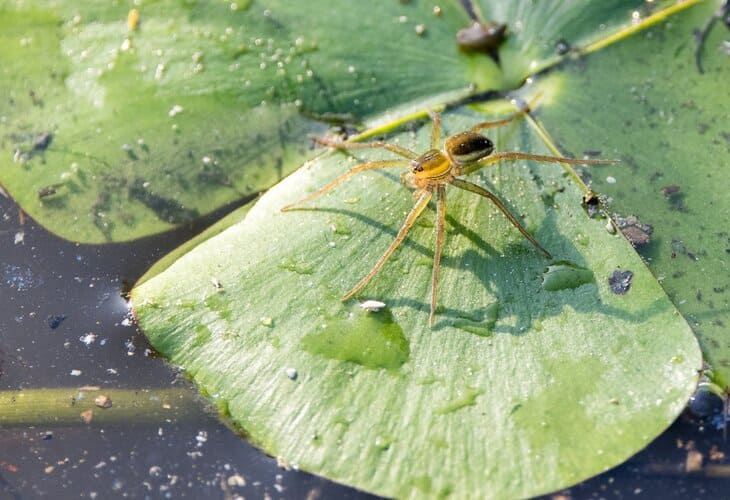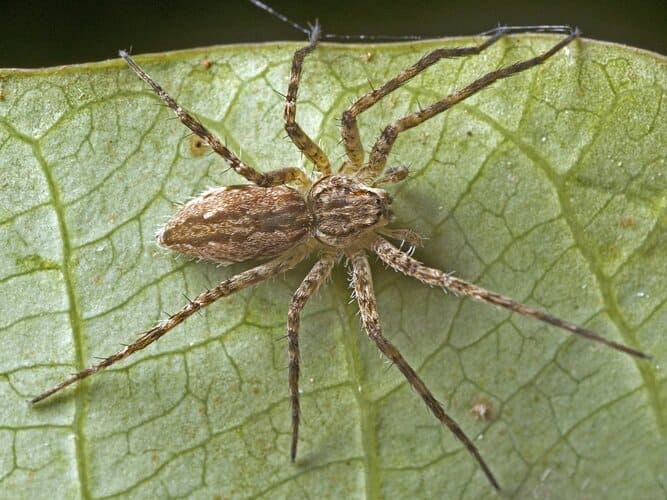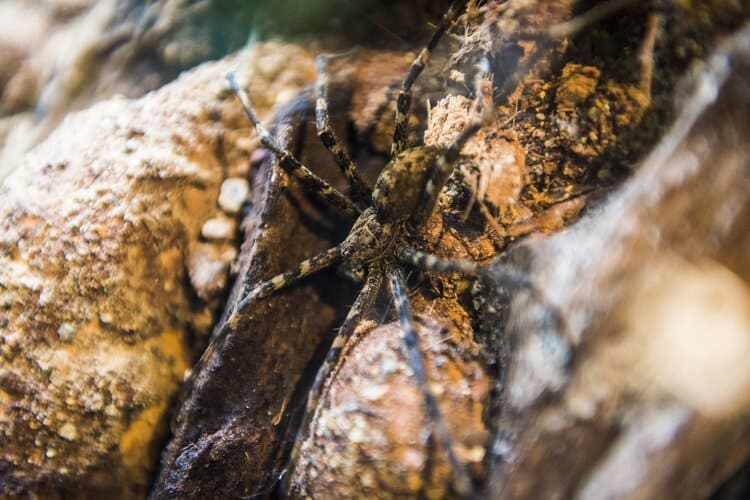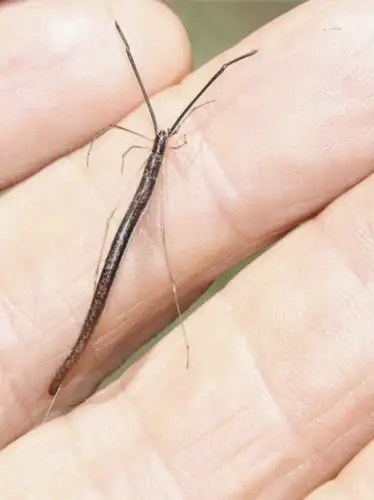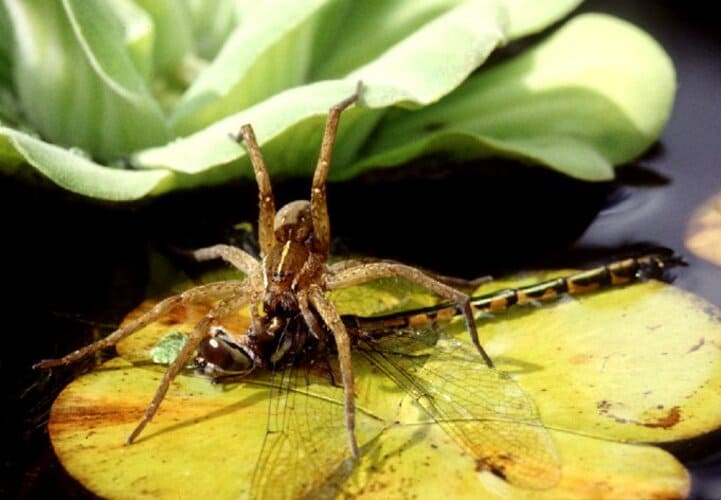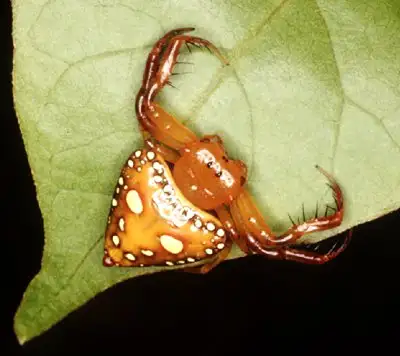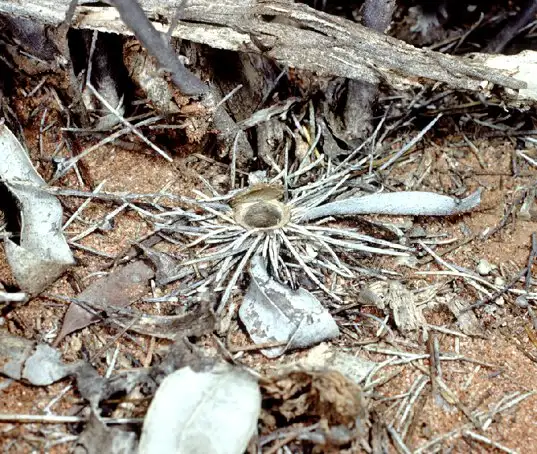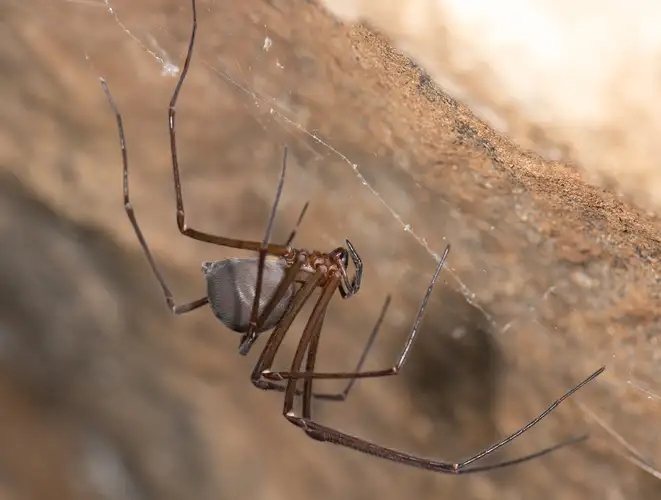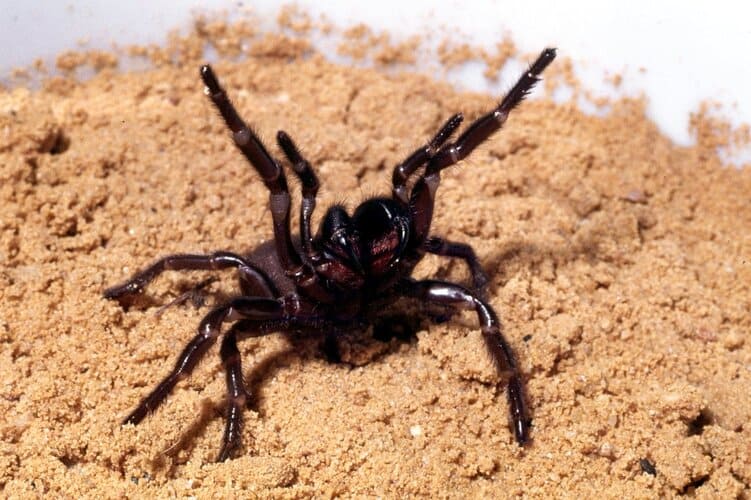Water Spider
IUCN
LCBasic Information
Scientific classification
- name:Water Spider
- Scientific Name:Argyroneta aquatica (Clerck, 1757)
- Outline:Arthropoda
- Family:Argyroneta aquatica Water spider
Vital signs
- length:Adult females about 8–15 mm long; males slightly longer but slimmer
- Weight:A small, light-bodied spider weighing only tens to a few hundred milligrams
- lifetime:Estimated 1–2 years in natural conditions, depending on water quality and food availability
Feature
The only spider that lives its whole life underwater, building a silk diving bell filled with air and preying on freshwater invertebrates.
Distribution and Habitat
Temperate freshwater ponds, lakeshores and slow streams in Europe and parts of Asia, especially where submerged plants and clean, oxygen-rich water are present.
Appearance
Dark brown or greyish body covered with fine hairs; appears as a bright silver bubble underwater due to a thin layer of trapped air.
Details
The Water Spider, more precisely the Diving Bell Spider, refers to the species Argyroneta aquatica. It is the only known spider thatspends its entire life underwater. This remarkable arachnid lives in still or slow-moving freshwater and is famous for the silken “diving bell” it builds and fills with air.
Taxonomy & Names
Common English names: Water Spider, Diving Bell Spider
Scientific name: Argyroneta aquatica (Clerck, 1757)
Genus: Argyroneta
Class & order: Arachnida, Araneae (true spiders)
Appearance
The Water Spider is small to medium in size but highly distinctive:
Body size: adult females are about 8–15 mm long; males are often slightly longer but slimmer;
Colouration: on land the spider appears dark brown or greyish, with a somewhat rounded abdomen;
Silvery coat underwater: the body is covered in dense hairs that trap air, so when submerged the spider appears as a shining silver bubble due to the thin layer of air around it;
General form: like other spiders it has eight legs and eight eyes, but the legs are well suited for moving among aquatic plants and swimming short distances.
The Diving Bell & Breathing Underwater
The most famous adaptation of Argyroneta aquatica is its underwater diving bell:
Between submerged plants the spider spins a bell-shaped or oval silken chamber and anchors it to stems and leaves;
It then makes repeated trips to the surface, carrying small bubbles of air on its hairy abdomen and legs back to the bell;
These bubbles are released inside, gradually filling the bell with air until a stable underwater “room” is formed;
Inside the diving bell the spider can rest, feed, moult and lay eggs. Oxygen diffuses in from the surrounding water while carbon dioxide diffuses out through the silk, allowing the bell to function as a long-lasting air store.
The spider spends most of its time either inside the bell or nearby in the vegetation, returning to the surface only occasionally to renew its air supply.
Distribution & Habitat
The Water Spider occurs mainly in temperate regions of Europe and parts of Asia. It inhabits:
Vegetation-rich ponds and the shallow margins of lakes;
Slow-moving streams, ditches and backwaters with abundant aquatic plants;
Artificial ponds and wetlands, provided the water is clean and well oxygenated.
The species prefers still or gently flowing freshwater with dense submerged vegetation. Polluted or heavily disturbed waterbodies are generally unsuitable.
Diet & Behaviour
The Water Spider is an active underwater predator. Its diet usually includes:
Aquatic insects and their larvae, such as mosquito larvae and small beetles;
Small crustaceans and other invertebrates in the water column and among plants;
Occasionally tiny fish fry or tadpoles that venture close to the diving bell.
The spider hunts by patrolling among plants near its bell. When it detects movement or vibrations in the water, it swims or walks rapidly towards the prey, delivers a venomous bite and then carries the captured animal back to the bell or a nearby perch to feed.
Reproduction & Life Cycle
Courtship and mating occur underwater. The female constructs a special diving bell in which she lays and guards the egg sac. Spiderlings hatch and initially remain near the maternal bell before dispersing and building their own smaller diving bells within the aquatic vegetation.
Venom & Human Significance
Like other spiders, Argyroneta aquatica has venom to subdue its prey, but it is not regarded as dangerous to humans:
It is small and reclusive, spending most of its life underwater away from people;
Bites are rare and typically occur only if the spider is handled or trapped during pond maintenance;
Reported effects are usually limited to mild local pain and swelling.
Simple first aid (washing the area and monitoring for symptoms) is usually sufficient. Medical advice is recommended if an unusual or strong reaction occurs, particularly in children or allergy-prone individuals.
Ecological Role & Conservation
The Water Spider occupies a unique niche as a fully aquatic spider and forms part of the freshwater food web, both as a predator of small invertebrates and as prey for fish and larger animals.
Because it depends on clean, plant-rich freshwater, the presence of Water Spiders can be a useful indicator of healthy wetland and pond habitats. Protecting and restoring wetlands, reducing pollution and maintaining natural aquatic vegetation all help to conserve this unusual species and the communities it lives with.
FAQ
Q1. Is the Water Spider really fully aquatic?
Yes. Argyroneta aquatica is the only spider known to live almost its entire life underwater,
using a diving bell and a layer of air trapped in its body hairs to breathe.
Q2. Can the Water Spider walk on the water surface like water striders?
No. Water spiders move mainly underwater by walking and swimming among plants.
Water striders are insects that use surface tension to skate on the water surface.
Q3. Is the Water Spider dangerous if I find it in a pond?
It is considered harmless to most people. Bites are rare and generally cause only mild, local effects.
Avoid handling the spider directly if you are concerned.
Q4. Should I remove Water Spiders from my garden pond?
In most cases there is no need. They are part of a healthy freshwater ecosystem and help control aquatic insects.
If you do not wish to have them, reducing dense aquatic vegetation and avoiding stagnant, nutrient-rich conditions
will make the habitat less suitable for them.

